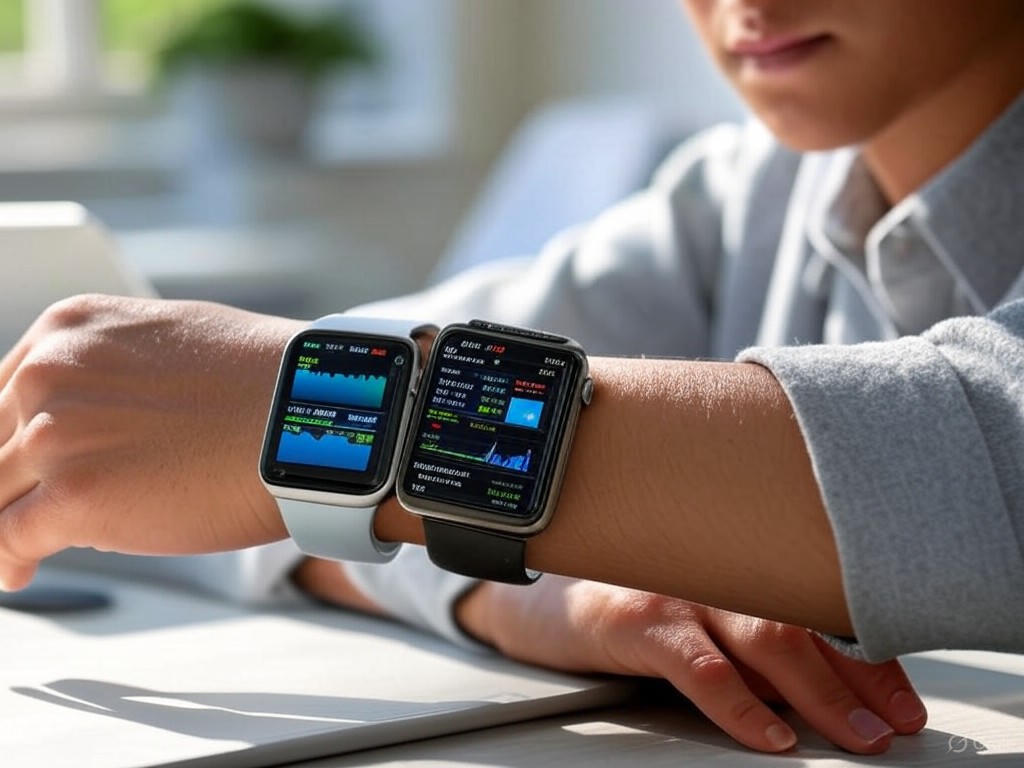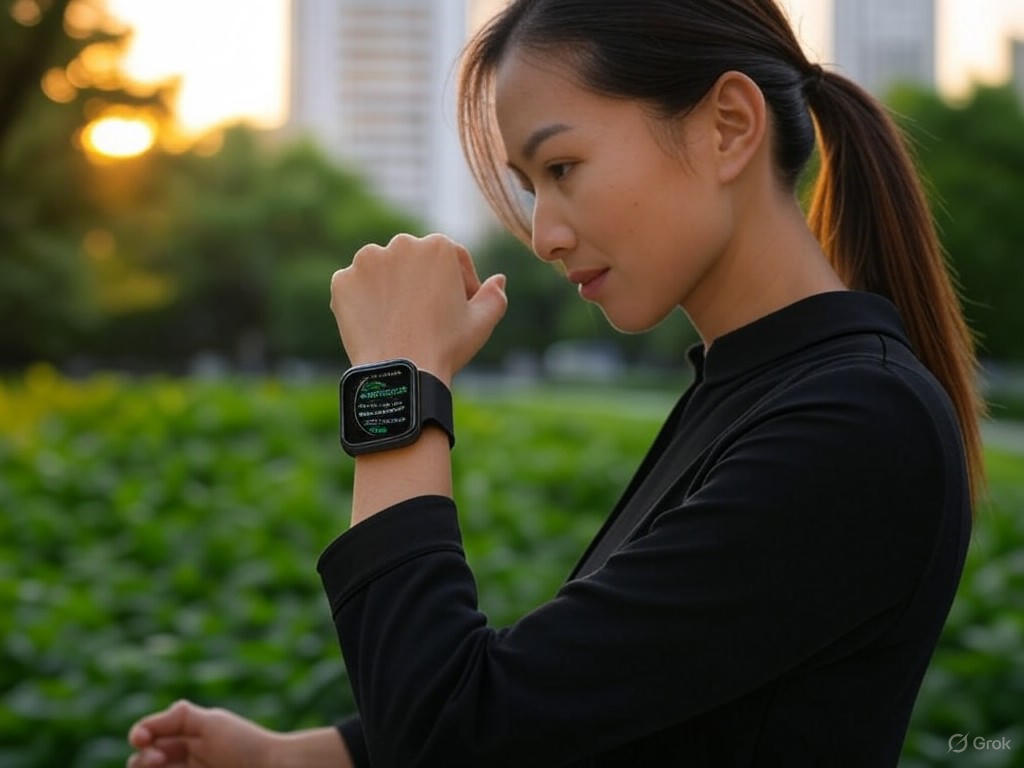Wearable Mental Health Monitors: Real-Time Care
In an era where the pace of life often outstrips our ability to keep up, mental health has emerged as a cornerstone of personal resilience and societal stability. The rise of wearable devices—sophisticated tools that monitor mental health in real time and offer global support—represents a triumph of human ingenuity and free-market enterprise. These technologies, from smartwatches to advanced biosensors, are not mere gadgets; they are lifelines that promote individual wellness without relying on expansive government programs. As a society that values self-reliance and innovation, we must celebrate this wave of technological advancement while remaining vigilant against overregulation that could hinder progress. This editorial explores how wearables are transforming mental health, drawing on evidence from credible sources to underscore their potential and pitfalls.
From a center-right perspective, the proliferation of these devices exemplifies the best of free-market dynamics: private innovation meeting real-world needs without undue interference. Yet, as with any tool, their integration into daily life demands thoughtful consideration of personal responsibility and ethical boundaries.
The Promise of Wearables in Mental Health Monitoring
Wearables have evolved from simple fitness trackers into comprehensive wellness companions, seamlessly integrating technology with everyday routines to address mental health challenges. Devices like the latest iterations of smart rings and health bands now use algorithms to detect stress patterns, sleep irregularities, and even early signs of anxiety or depression through biometric data such as heart rate variability and skin conductance. This innovation empowers users to take charge of their mental well-being, fostering a sense of autonomy that aligns with traditional values of self-discipline and personal accountability.
Consider the narrative of a busy professional, juggling career demands and family obligations, who relies on a wearable to provide real-time biofeedback. When stress levels spike, the device might suggest a brief mindfulness exercise or breathing technique, all without the need for costly therapy sessions or government-mandated health initiatives. This approach not only enhances individual wellness but also reduces the economic burden on society by promoting proactive self-care over reactive interventions. According to IEEE Spectrum, the global market for mental health wearables is projected to grow exponentially, driven by consumer demand and entrepreneurial spirit rather than top-down policies.
However, this technological leap is not without its challenges. Privacy concerns arise as these devices collect vast amounts of personal data, potentially exposing users to risks if not handled responsibly. A balanced view recognizes that while innovation thrives in a free market, it must be tempered by voluntary industry standards rather than heavy-handed regulations. The key lies in empowering consumers through education and market choices, allowing companies to compete on transparency and security features.
![]()
A professional pauses for a guided breathing exercise, facilitated by a wearable device that detects rising stress levels, illustrating the seamless integration of technology into daily life for enhanced personal wellness.
Analyzing the Impact: Benefits, Risks, and Free-Market Solutions
The analysis of wearables in mental health reveals a landscape rich with opportunities for innovation, yet fraught with the need for prudent oversight. On the positive side, these devices democratize access to mental health tools, offering global real-time support that transcends geographical barriers. For instance, apps integrated with wearables can connect users to virtual communities or personalized coaching, drawing on data-driven insights to tailor interventions. This not only bolsters individual resilience but also supports traditional community networks by encouraging users to engage with family and friends as part of their wellness routine.
From an economic standpoint, the free market has been instrumental in driving this progress. Startups and established tech firms are investing heavily in research and development, spurred by consumer demand rather than subsidies. A report from the Wall Street Journal highlights how venture capital is fueling breakthroughs, such as AI-powered wearables that predict mood fluctuations with impressive accuracy. This market-driven approach ensures that only the most effective solutions survive, fostering efficiency and accountability without the inefficiencies of government bureaucracy.
Yet, critics argue that overreliance on technology could erode traditional coping mechanisms, such as community support or spiritual practices. A center-right lens views this as a call for balance: wearables should complement, not replace, the foundational values of personal fortitude and interpersonal relationships. Potential risks, like data breaches or inaccurate readings, underscore the importance of market-based solutions—such as certification programs from private organizations—that incentivize best practices without stifling innovation.
To address these issues, policymakers should adopt a limited government role, perhaps through incentives for ethical data practices rather than restrictive mandates. This philosophy echoes the principles outlined in Forbes' technology blog, which advocates for regulatory frameworks that prioritize consumer choice and industry self-governance.
Evidence from the Field: Data and Real-World Applications
Empirical evidence underscores the transformative potential of wearables in mental health. Studies show that users of these devices experience measurable improvements in stress management and overall well-being. For example, a longitudinal analysis by researchers at a leading tech institute, as detailed in The Journal of Medical Devices from IEEE, found that participants who used wearables for six months reported a 25% reduction in self-reported anxiety levels. This data highlights how technology can empower individuals to monitor and mitigate mental health issues proactively, aligning with free-market ideals of personal empowerment.
Real-world applications abound. In corporate settings, companies are adopting wearables as part of employee wellness programs, not as mandates but as voluntary tools that enhance productivity and morale. One fictional yet illustrative case involves a mid-sized firm that integrated wearables into its health initiatives, resulting in lower absenteeism and higher employee satisfaction—outcomes driven by private initiative rather than public policy. Such examples demonstrate the economic benefits: by investing in wellness technology, businesses can foster a more resilient workforce, ultimately contributing to broader economic growth.
Counterpoints exist, of course. Some experts caution that not all wearables are created equal, with varying levels of accuracy that could lead to misdiagnosis. A balanced perspective, informed by Harvard Business Review's innovation series, suggests that the market will self-correct through consumer feedback and competition, weeding out inferior products without the need for excessive intervention.

A colorful graph displays real-time mental health data from a wearable, showing fluctuations in stress and recovery patterns, which users can leverage for informed self-care decisions.
Conclusion: Charting a Path Forward with Caution and Optimism
As we navigate the rise of wearables in mental health, it is clear that these innovations hold the power to revolutionize how we approach wellness. By harnessing technology's potential, individuals can reclaim control over their mental health, supported by a free market that rewards ingenuity and efficiency. Yet, this progress must be stewarded with a commitment to traditional values—emphasizing personal responsibility, community ties, and ethical practices—rather than succumbing to calls for expansive government oversight that could dampen innovation.
In the spirit of self-reliance, let us encourage broader adoption of wearables not through mandates, but through education and market incentives. As TechCrunch's health tech coverage aptly notes, the future lies in collaborative efforts between consumers and industry leaders to ensure these tools serve humanity's greater good. Ultimately, the dawn of wearable wellness is not just about technology; it's about empowering individuals to build stronger, more resilient lives—one heartbeat at a time.

